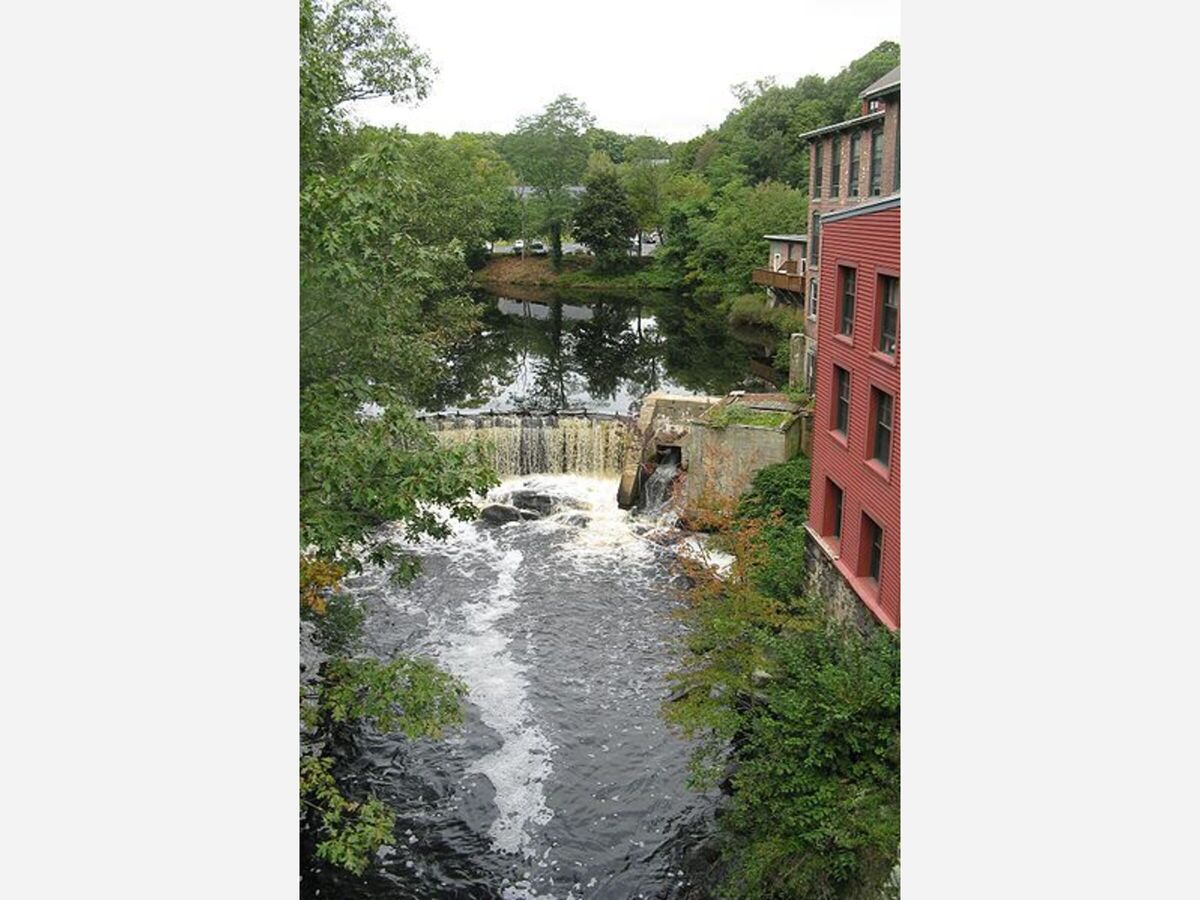Image

With the elimination of the Caryville Dam on the Charles River in Bellingham several years ago, the mill and the surrounding village structures were permanently altered or eliminated and a vibrant ecosystem at Roaring Brook Pond was completely destroyed, replaced by narrow, ditch for the Charles River. The process also eliminated a waterfront or at least a water view that many home owners had long taken for granted.
Now, according to Robert Kearns, a recent UMass graduate, and “Climate Resilience Specialist” at Charles River Watershed Association (CRWA), in his posted musing on LinkedIn, it’s time to look at Sanford Mill Dam.
“I visited the Lincon/Sanford Street Bridge in Franklin and Medway to view the privately-owned Sanford Mill Dam over the holiday weekend.
According to the latest dam safety inspection this significant dam is in poor condition with no emergency evacuation or maintenance plans. Dam owner is disputed with no known maintenance work for many decades.
It is a potential candidate for removal given the "advanced deterioration of the structure" according to the inspection report from 2019.
Look forward to learning more about this structure on the Charles River. The status quo is not sufficient as downstream residents and businesses are vulnerable from dam failure from this essentially abandoned structure.”
Sanford Mill Dam is a defining element of the Medway Village Street neighborhood, and the mill’s dam on the Charles River is the reason the mill, long-since converted to condominiums, is there. Of interest to well-dependent towns like Franklin, by creating a mill pond, the dam helps to increase the inflow of water to nearby aquifers.
When contacted about the CRWA’s dam removal initiative, `Lorraine’ – in charge of the Sanford Mill condo property for Franklin Square Management Associates. said “this is the first I have heard of it.”
A similar reaction came from a local state legislator.
This week, Kearns and CRWA are moving from musing to proselytizing with an online meeting targeted at “Franklin elected and appointed leaders,” to inform them about climate-related threats to the Franklin community, such as floods, droughts, and heatwaves – “and to share ideas about concrete actions that can be taken to reduce these risks.”
The pitch goes on to mention “Federal stimulus and recovery funds...coming for resilience projects, and the Baker Administration is offering Municipal Vulnerability Preparedness (MVP) and Action Grants to help communities invest in climate resilience. CRWA goes on to note, “we want to ensure municipal leaders have the data you need to apply this and other funding most effectively.”
Indeed, especially with freshly printed federal money being doled out in quantity for the Bay State, state agencies and the non-governmental organizations like CRWA that so frequently benefit from such largesse, are lining up with suggestions on how to spend. And dam removal has been top of mind at CRWA for some time. Recently, even the landmark dam near Watertown Square, was suggested for removal by CRWA as was the tiny Eagle Brook dam in Wrentham, which dates back to the 17th century.
How much government funding ends up going to CRWA is not clear, but, a form 990 filing from 2019, listed some $1.5 million in contributions and grants (some presumably private but many likely from the government), and salaries and benefits of over $700,000.
Conspicuously absent from the list of dams targeted for destruction by CRWA, however, is the Charles River Dam (the location of the Science Museum in Boston) which is all that stands between the sea and the tides which used to naturally flow and intermingle with the waters of the Charles almost as far as Watertown. Indeed, access to the ocean that far inland was one of the reasons the Federal government planted one of its first great arsenals at Watertown following the War of 1812.
Before that Charles River Dam was completed in 1910 (it has since been supplemented by a more modern structure on the seaward side), the “natural” lower Charles, was a smelly festering mess, of mud flats and swirling tides, shunned by those who could keep it at a distance. The current version of the river is post-card perfect, but by no means natural.
* * * *
On Wednesday, CRWA will tell their tale.
How authorities in Franklin (and Medway, if they are invited) respond to the pitch remains to be seen, but when “free” money from another level of government is available, anything could happen.